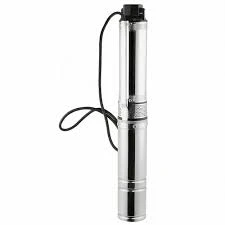Nov . 18, 2024 19:26 Back to list
Exploring the Benefits of Submersible Pumps for Deep Well Applications in Various Industries
Submersible deep well pumps are vital components in modern water extraction systems, enabling efficient access to groundwater from deep aquifers. These pumps are specifically designed to operate underwater, making them a preferred choice for agriculture, municipal water supply, and industrial applications.
The design of submersible deep well pumps allows them to function submerged in water, which helps prevent the issues associated with suction lift pumps. Traditional pumps rely on atmospheric pressure to draw water up, which can be inefficient and limit their depth of operation. In contrast, submersible pumps are placed directly within the water source; therefore, they can push water to the surface rather than pull it, allowing for much greater depths—often exceeding 800 feet.
Overall, submersible deep well pumps consist of a motor and a pump mounted on a single shaft
. The electric motor is sealed to prevent moisture ingress and is typically cooled by the water surrounding it. This design ensures longevity and reliable performance, even under the demanding conditions often found in deep wells.One of the key advantages of these pumps is their efficiency. They can operate at various flow rates and adapt to different well conditions, which is crucial for optimizing energy use. Additionally, the motors are often designed to run on electrical power, but some models are available for solar power, making them suitable for remote locations where conventional power sources are unavailable.
submersible deep well pumps

The installation process of submersible pumps involves lowering the entire assembly into the well. It requires careful handling and precise measurements to ensure the pump reaches the required depth and functions effectively. Regular maintenance is essential, which typically includes inspecting the motor, check valves, and other components to ensure they are free from blockages and wear.
While submersible deep well pumps are durable, there will come a time when they may need replacement or repairs. Factors such as water quality, installation conditions, and usage frequency directly influence their lifespan. Investing in high-quality pumps from reputable manufacturers can mitigate the risks of premature failure, ensuring that water access remains consistent and reliable.
In summary, submersible deep well pumps represent a significant advancement in water extraction technology. Their efficiency, depth capacity, and suitability for various applications make them an essential choice for managing groundwater resources, contributing to sustainable water management practices in diverse settings.
-
Submersible Water Pump: The Efficient 'Power Pioneer' of the Underwater World
NewsJul.01,2025
-
Submersible Pond Pump: The Hidden Guardian of Water Landscape Ecology
NewsJul.01,2025
-
Stainless Well Pump: A Reliable and Durable Pumping Main Force
NewsJul.01,2025
-
Stainless Steel Submersible Pump: An Efficient and Versatile Tool for Underwater Operations
NewsJul.01,2025
-
Deep Well Submersible Pump: An Efficient 'Sucker' of Groundwater Sources
NewsJul.01,2025
-
Deep Water Well Pump: An Efficient 'Sucker' of Groundwater Sources
NewsJul.01,2025
-
 Submersible Water Pump: The Efficient 'Power Pioneer' of the Underwater WorldIn the field of hydraulic equipment, the Submersible Water Pump has become the core equipment for underwater operations and water resource transportation due to its unique design and excellent performance.Detail
Submersible Water Pump: The Efficient 'Power Pioneer' of the Underwater WorldIn the field of hydraulic equipment, the Submersible Water Pump has become the core equipment for underwater operations and water resource transportation due to its unique design and excellent performance.Detail -
 Submersible Pond Pump: The Hidden Guardian of Water Landscape EcologyIn courtyard landscapes, ecological ponds, and even small-scale water conservancy projects, there is a silent yet indispensable equipment - the Submersible Pond Pump.Detail
Submersible Pond Pump: The Hidden Guardian of Water Landscape EcologyIn courtyard landscapes, ecological ponds, and even small-scale water conservancy projects, there is a silent yet indispensable equipment - the Submersible Pond Pump.Detail -
 Stainless Well Pump: A Reliable and Durable Pumping Main ForceIn the field of water resource transportation, Stainless Well Pump has become the core equipment for various pumping scenarios with its excellent performance and reliable quality.Detail
Stainless Well Pump: A Reliable and Durable Pumping Main ForceIn the field of water resource transportation, Stainless Well Pump has become the core equipment for various pumping scenarios with its excellent performance and reliable quality.Detail
